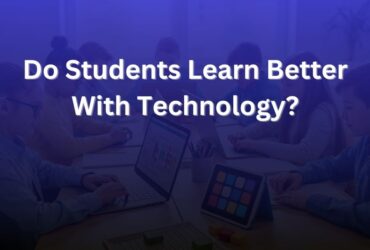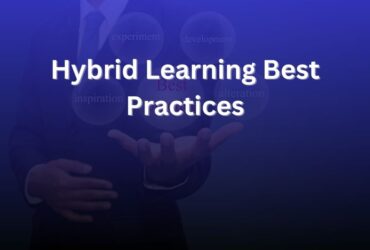In today’s fast-paced world, continuous learning is more crucial than ever. Companies that prioritize employee development enhance their workforce’s skill set, drive innovation, and maintain a competitive edge. But how can businesses successfully weave educational programs into their fabric? This blog post reveals the steps and strategies to implement effective educational programs in your company, fostering an environment that thrives on knowledge and growth.
Assessing Training Needs Within the Organization
Before launching an educational program, it’s crucial to understand your organization’s specific needs. Conducting a thorough training needs assessment helps identify gaps in skills and knowledge, ensuring that the educational programs you implement are relevant and effective.
One approach to assess training needs is to conduct surveys or interviews with employees. This allows you to gather firsthand insights about their daily challenges and areas where they feel more training could be beneficial. Additionally, collaborating with department heads and managers can provide a broader perspective on the skills required to achieve company goals, including how to train trainers and specific areas where employees may need further development. Another method is to analyze performance data and track key performance indicators (KPIs). This helps identify areas where productivity or efficiency may be lacking, allowing you to target specific training interventions accordingly. You create a win-win situation that drives growth and success by aligning educational programs with employee needs and organizational objectives.
Setting Clear Objectives for Educational Programs
Once you’ve assessed the training needs, the next step is to set clear objectives for your educational programs. Well-defined objectives provide direction and focus, ensuring the programs are tailored to meet specific goals. Short-term objectives include improving specific skills or increasing knowledge in a particular area. Long-term objectives involve fostering leadership qualities or creating a more innovative company culture. It’s essential to ensure that the objectives are measurable and achievable. This allows you to track progress and make necessary adjustments along the way. Additionally, aligning goals with the company’s overall mission and values helps reinforce the importance of educational programs and motivates employees to participate actively.
Designing Tailored Education Programs
With clear objectives, the next step is to design educational programs tailored to your organization’s unique needs. This involves selecting appropriate training methods and materials to facilitate effective learning. Consider your employees’ diverse learning styles and preferences when designing the programs. Some prefer hands-on workshops and interactive sessions, while others excel in self-paced online courses. By offering a variety of learning formats, you can accommodate different needs and maximize engagement—additionally, leverage technology to enhance the learning experience. Online platforms and digital tools can provide convenient access to training materials and facilitate employee collaboration. Incorporating gamification elements or interactive modules can also make learning more enjoyable and effective.
Implementing Effective Training Delivery Methods
The success of educational programs also depends on how the training is delivered. Choosing the proper delivery methods can significantly impact employee effectiveness and engagement. Combining in-person and online training can cater to different learning preferences and provide flexibility. In-person workshops and seminars allow face-to-face interactions and hands-on activities, while online modules and webinars offer convenience and accessibility. Consider incorporating experiential learning opportunities, such as on-the-job training or simulations, to reinforce theoretical knowledge. These practical experiences allow employees to apply what they’ve learned in real-world scenarios, enhancing retention and skill development.
Monitoring and Evaluating Program Effectiveness
Implementing educational programs is an ongoing process that requires monitoring and evaluation to ensure their effectiveness. Establish key performance indicators (KPIs) to measure the programs’ success. These can include metrics such as employee feedback, knowledge retention, and improved job performance. Surveys or interviews should be conducted to gather participant feedback and identify areas for improvement. Review the objectives regularly and align them with your organization’s evolving needs. Adjust the programs accordingly to address any gaps or emerging trends. You can continuously monitor and evaluate the programs to ensure they remain relevant and impactful.
Overcoming Challenges in Program Implementation
Implementing educational programs may present challenges. However, anticipating and addressing these challenges can increase the likelihood of success. One common challenge is resistance to change. Employees may hesitate to participate if they perceive the programs as time-consuming or irrelevant. Clearly communicate the benefits and align the programs with their individual goals and aspirations to overcome this.
Another challenge is resource allocation. Implementing educational programs requires time, budget, and dedicated personnel. Lastly, maintaining motivation and engagement throughout the programs can be challenging. To keep them motivated and committed, regularly check in with participants, provide ongoing support, and celebrate their achievements.
Showcasing Success Stories and Case Studies
One powerful way to inspire employees and demonstrate the value of educational programs is to showcase success stories and case studies. Highlight individuals or teams that have benefited from the programs and achieved remarkable results. Share their stories through internal newsletters, social media platforms, or company-wide events. Include testimonials and quotes that highlight the positive impact the programs have had on their personal and professional lives. By showcasing success stories, you inspire others to participate in the programs and build a sense of pride and accomplishment within the organization. It reinforces that investing in education leads to tangible outcomes and strengthens the commitment to learning.
Leveraging External Resources and Partnerships
While internal resources are valuable, leveraging external resources and partnerships can enhance the effectiveness of educational programs. Collaborating with industry experts and academic institutions can provide additional insights and opportunities for growth. Consider partnering with universities or training providers to offer specialized courses or certifications. These partnerships can bring fresh perspectives and expertise to your programs. Additionally, attending conferences or workshops within your industry can expose employees to new ideas and best practices. Join professional networks or associations to stay updated with industry trends and technological advancements. These external resources can provide valuable insights and align your programs with the latest developments.
Implementing educational programs in your company is a strategic decision that can transform your organization’s culture and drive sustainable growth. Overcoming challenges, integrating continuous learning, and showcasing success stories further reinforce the value of educational programs. By leveraging external resources and partnerships, you enhance the effectiveness and relevance of your initiatives. Investing in employee education is an investment in your company’s future. Start implementing educational programs today and unlock the full potential of your workforce.












































Leave a Reply